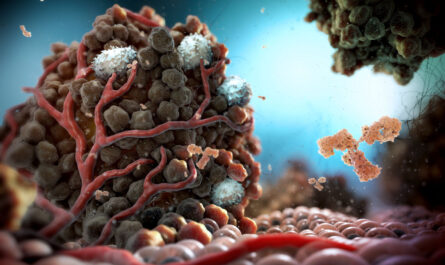Cancer is one of the leading causes of deaths worldwide. According to the statistics provided by WHO, around 9.6 million deaths occur globally every year due to cancer. Early detection and diagnosis are crucial in battling this deadly disease. Advanced diagnostics have enabled doctors to detect various types of cancers at an early stage when the chances of successful treatment are highest. In this article, we will discuss some of the key diagnostic techniques used for cancer screening and diagnosis.
Imaging Techniques for Cancer Diagnosis
Imaging tests play a pivotal role in cancer diagnostics by helping doctors visualize the inside of the body. They help detect abnormal growths or changes in organs, tissues, or bones that could indicate cancer. Several imaging techniques are commonly used for cancer screening and diagnosis:
X-rays: Plain X-rays use low doses of radiation to produce images of the inside of the body. They are helpful for detecting tumors in lungs, breast, and bones. Digital mammography uses low-dose x-rays to examine breast tissue and detect tumors not seen on a physical exam.
CT Scans: Computerized tomography or CT scans generate detailed cross-sectional images of organs and tissues inside the body using X-rays and computer processing. This imaging technique is useful for detecting and monitoring cancers in lungs, kidneys, abdomen, pelvis, neck and chest.
MRI: Magnetic resonance imaging or MRI uses powerful magnets and radio waves to produce detailed images of body structures without using radiation. It is helpful for examining cancers in brain, spinal cord, breasts, prostate and other internal organs.
Ultrasound: High-frequency sound waves are used to create images of internal organs and tissues in this test. It is commonly used for examining gallbladder, thyroid, breasts, abdomen, pelvis and pregnant women’s fetus. Ultrasound imaging helps detect abnormal growths in soft tissues.
PET Scans: Positron emission tomography or PET scan uses radioactive tracers to detect cancer cells inside the body. Cancer cells absorb more radioactive tracer compared to normal cells. PET scanning is effective for detecting cancers in lungs, breasts, thyroid, colorectal, head and neck. It is also useful for evaluating treatment response and detecting spread of cancer.
Biopsy for Cancer Diagnostics
Once imaging tests indicate a suspicious abnormality, tissue samples need to be examined under a microscope to confirm cancer diagnosis. Biopsies are performed using minimally invasive procedures:
Fine Needle Aspiration (FNA): A thin hollow needle is used to withdraw cells and small clusters from suspicious areas for examination. This type of biopsy is commonly done for breast lumps, thyroid nodules and lymph nodes.
Core Needle Biopsy: In this method, a large hollow needle is used to remove a small cylinder of tissue sample for examination. It is helpful for breast, thyroid and lung lesions.
Surgical Biopsy: In case of tumors that cannot be accessed by needle biopsies, a surgical procedure is performed under local or general anesthesia to remove a sample of tumor tissue for definitive cancer diagnosis.
Molecular Diagnostic Tests
In addition to imaging and biopsy, molecular diagnostic tests analyzing genetic changes within cancer cells also play an important role in cancer detection, staging, prognosis and treatment selection:
Immunohistochemistry: Special antibody stains attached to cancer tissues help identify protein markers specific to certain types of cancer cells. This aids in determining cancer type and aggressiveness.
Karyotype Testing: Abnormal chromosomes in cancer cells are examined under a microscope to identify cancer-related genetic changes. It helps diagnose cancers like leukemia and multiple myeloma.
Fluorescent In-Situ Hybridization (FISH): This technique uses DNA probes that attach to specific chromosomes to detect genetic mutations or chromosomal abnormalities associated with cancers like CML.
Mutation Analysis: Genetic testing of cancer tissues or blood identifies mutations in genes linked to increased cancer risk. Examples include BRAF test for melanoma and EGFR test for lung cancer.
Gene Expression Profiling: Newer techniques analyze thousands of genes together to understand how cancer may respond to treatment options like immunotherapy. Tests like Oncotype DX help guide breast cancer treatment.
Liquid Biopsies for Early Cancer Detection
Scientists are currently developing blood-based liquid biopsies that can detect and monitor cancers even before any clinical signs appear. Cell-free tumor DNA (cftDNA) and circulating tumor cells (CTCs) shed into bloodstream from primary and metastatic cancer sites hold promise for non-invasive cancer screening and monitoring response to therapies:
Healthy individuals and those with early-stage cancers shed very low levels of cftDNA in blood which can be measured using highly sensitive technologies like digital PCR and NGS sequencing. Demonstrating clinical effectiveness of cftDNA for cancer screening will require large validation studies.
Rare CTCs traversing through blood vessels can also be captured and analyzed for genetic markers to identify cancer type and track treatment response. The U.S. FDA has approved tests like CellSearch System and Epic Sciences CTC platform for use in detecting CTCs in metastatic cancers like breast, prostate and colon.
Liquid biopsy tests targeting cftDNA or CTCs offer advantages of simple blood collection compared to invasive tissue biopsies. They may help detect cancer relapse earlier and guide treatment changes. Further refinements are still needed before these tests are ready for routine cancer screening use.
With advancements in diagnostic imaging, molecular testing and liquid biopsy technologies, physicians now have more powerful tools than ever before to detect cancers in their earliest and most treatable stages. Early detection saves lives by facilitating timely treatment interventions that can cure or significantly prolong survival in many cancer types. As non-invasive liquid biopsy tests validate in large clinical settings, cancer diagnostics may come closer to realizing the goal of simple blood tests that can screen for multiple cancers simultaneously at population levels. This will be a game changing development in the fight against cancer.
*Note:
1. Source: Coherent Market Insights, Public sources, Desk research
2. We have leveraged AI tools to mine information and compile it


